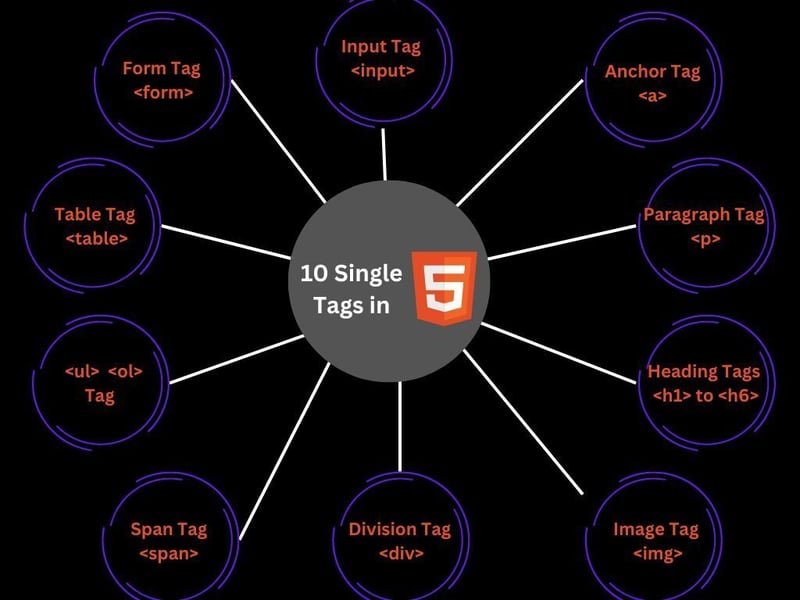
HTML (HyperText Markup Language) forms the foundation of web development, serving as the structure for every webpage on the internet. By understanding the most common HTML tags and their advanced uses in 2024, developers can create more efficient, accessible, and visually engaging web pages. In this post, we’ll explore these HTML tags and their most advanced use cases to help you level up your web development skills.

A block-level container used to group content.
Advanced Use:In 2024, developers often use < div > with CSS Grid and Flexbox to create complex, responsive layouts that adjust seamlessly across different screen sizes. Additionally, < div > is used with JavaScript to create dynamic content sections that load asynchronously.
The < span > tag is an inline container used to apply styles or manipulate text.
Advanced Use:Combined with CSS animations and JavaScript, < span > can create interactive text effects such as animated text shadows or color transitions on hover.
The tag defines a hyperlink, linking to other resources.
Advanced Use:In modern SPAs (Single Page Applications), the < a > tag is used for deep linking, enabling direct navigation to specific content sections. The download attribute is also used for direct file downloads.
The < img > tag is used to embed images.
**Advanced Use: **In 2024, the srcset attribute is used with < img > to provide different image resolutions for different devices, improving load times and performance.
The < form > tag creates an interactive form for user input.
**Advanced Use: **Developers use < form > with JavaScript frameworks to validate user input in real-time and submit data via AJAX without reloading the page.
The < input > tag specifies an input field for user data.
Advanced Use:HTML5 input types like date, range, and color are widely used for better user experience, reducing the need for custom JavaScript widgets.
The < button > tag represents a clickable button.
*Advanced Use: *< button > is used with JavaScript to perform actions such as triggering modals, submitting forms, or executing scripts for dynamic content updates.
The < header > tag represents a container for introductory content or a set of navigational links.
*Advanced Use: *< header > is used with ARIA roles to improve accessibility, helping screen readers identify page sections effectively.
The < footer > tag defines the footer section of a webpage, typically containing metadata or navigation links.
Advanced Use:< footer > is often used in conjunction with position: sticky to keep it visible at the bottom of the viewport as users scroll through the content.
The < article > tag specifies independent, self-contained content.
Advanced Use:< article > is used to mark up dynamic content that is retrieved and displayed on demand using JavaScript frameworks like React, enhancing SEO and user experience.
Want to get more knowledge on HTML,CSS and JavaScript.
Visit my Personal Website webdevtales.com
The above is the detailed content of Common HTML Tags: A erspective. For more information, please follow other related articles on the PHP Chinese website!




